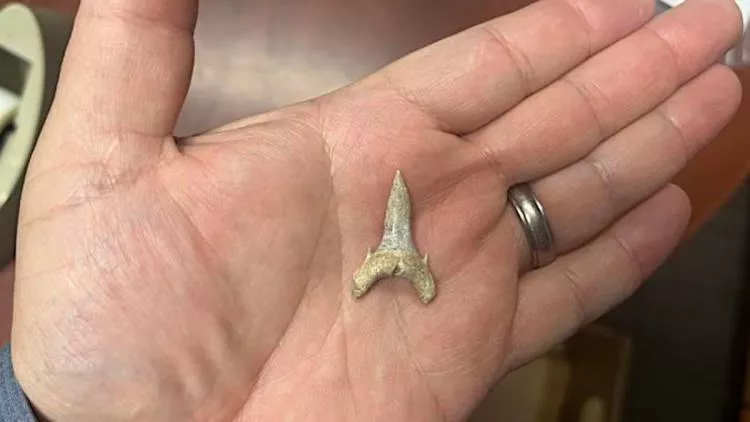Scientists discover fossilized remains of new ancient shark species
A groundbreaking discovery by a team of dedicated scientists has unveiled the existence of a previously unknown fossil shark species in Alabama, USA. They are thrilled to introduce Palaeohypotodus bizzocoi, one of the ocean's top predators after the extinction of the dinosaurs.
Palaeohypotodus, pronounced pale-ee-oh-hype-oh-toe-duss, translates to "ancient small-eared tooth," a reference to the shark's distinctive small needle-like fangs found on the sides of its teeth. Spearheaded by Jun Ebersole, Director of Collections at McWane Science Center in Birmingham, alongside David Cicimurri, Curator of Natural History at South Carolina State Museum, and T. Lynn Harrell, Jr., Paleontologist and Fossil Collections Curator at the Geological Survey of Alabama in Tuscaloosa, the team named the new species in honour of the late Dr. Bruce Bizzoco (1949-2022) of Birmingham, Alabama.
In their study, the team meticulously compared the fossilized teeth to those of contemporary sharks, such as Great Whites and Makos. Cicimurri explained that the distinctive tooth arrangement of Palaeohypotodus bizzocoi, differing from any living shark, was reconstructed by studying the jaws and teeth of present-day counterparts.
Ebersole revealed that the discovery of this shark species was serendipitous. While examining historical fossil collections at the Geological Survey in Alabama, he stumbled upon a small box of shark teeth dating back over a century from Wilcox County. He was puzzled by their unfamiliar character, and further investigation led to the identification of a new and previously unknown species.
Cicimurri highlighted the significance of the era in which Palaeohypotodus bizzocoi thrived, in the Paleocene epoch, approximately 65 million years ago, just after the mass extinction that claimed the dinosaurs. At that time, the southern part of the region that is now Alabama was submerged in a shallow tropical to sub-tropical ocean. As a dominant predator during this time of oceanic recovery, this shark provides valuable insights into life's resurgence after major extinction events.
According to Harrell, the understudied nature of this time period amplifies the importance of discovering this new shark species. "Shark discoveries like this one give us tremendous insights into how ocean life recovers after major extinction events and also allows us to potentially forecast how global events, like climate change, affect marine life today," he explained.
The naming of this ancient shark is part of an ongoing project led by Ebersole and Cicimurri to document Alabama's fossil fishes. Their combined efforts have already confirmed over 400 unique species of fossil sharks and bony fishes, solidifying Alabama's standing as one of the world's richest locations in terms of fossil fish diversity.
The study, entitled "A new species Palaeohypotodus Glickman, 1964 (Chondrichthyes, Lamniformes) from the lower Paleocene (Danian) Porters Creek Formation, Wilcox County, Alabama, USA," was published in the open access journal Fossil Record and can be downloaded here.
(c) Ila France Porcher
Author of The True Nature of Sharks
























